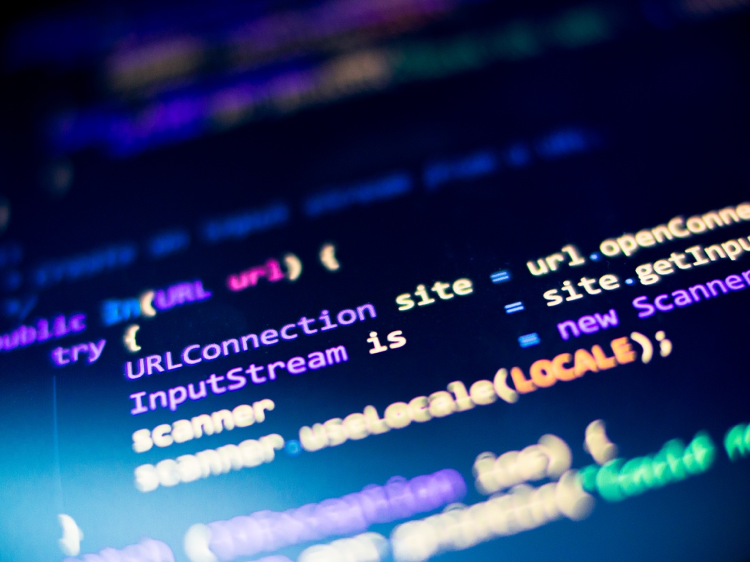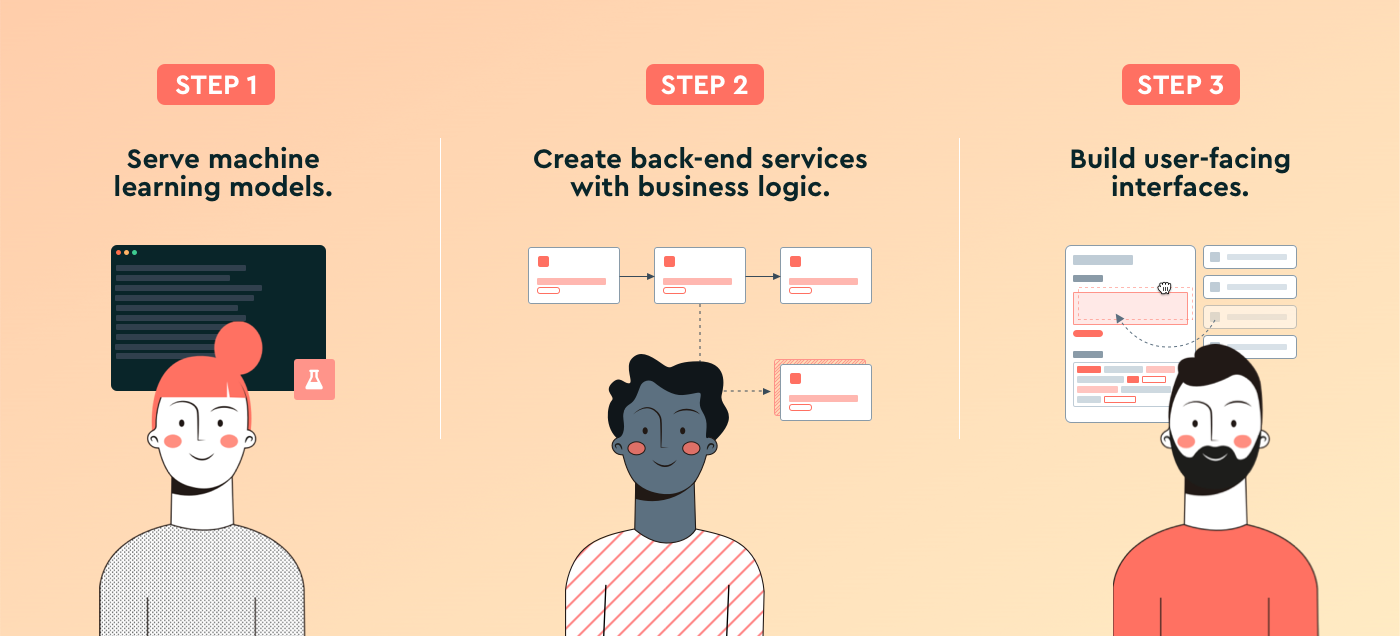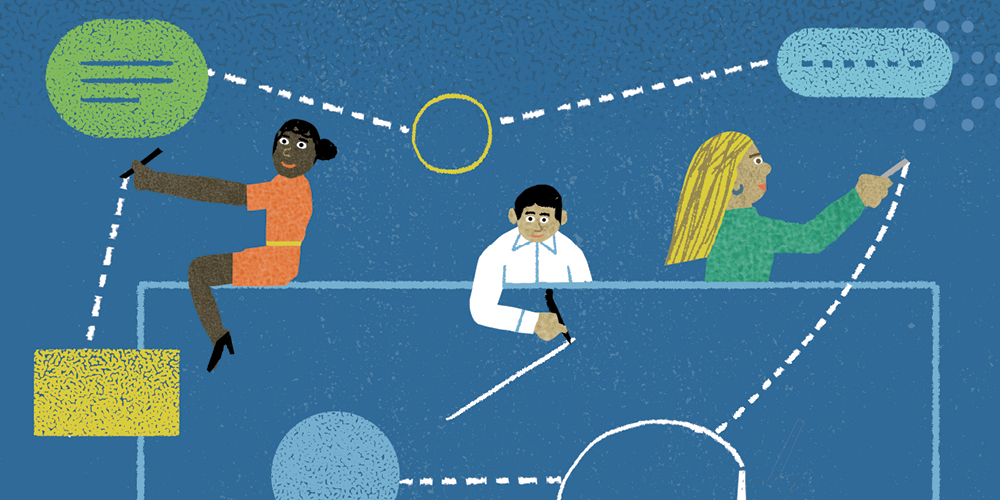A new era of DevOps, powered by machine learning

While programming languages have evolved tremendously, at their core they all
still have one major thing in common: having a computer accomplish a goal in the
most efficient and error-free way possible. Modern languages have made
development easier in many ways, but not a lot has changed in how we actually
inspect the individual lines of code to make them error free. And even less has
been done to keep your when it comes to improving code quality that improves
performance and reduces operational cost. Where build and release schedules once
slowed down the time it took developers to ship new features, the cloud has
turbo charged this process by providing a step function increase in speed to
build, test, and deploy code. New features are now delivered in hours (instead
of months or years) and are in the hands of end users as soon as they are ready.
Much of this is made possible through a new paradigm in how IT and software
development teams collaboratively interact and build best practices: DevOps.
Although DevOps technology has evolved dramatically over the last 5 years, it is
still challenging.
Productizing Machine Learning Models

Typically, there are three distinct but interconnected steps towards
productizing an existing model: Serving the models; Writing the
application’s business logic and serving it behind an API; and Building the
user interface that interacts with the above APIs. Today, the first two steps
require a combination of DevOps and back-end engineering skills (e.g.
“Dockerizing” code, running a Kubernetes cluster if needed, standing up web
services…). The last step—building out an interface with which end users can
actually interact—requires front-end engineering skills. The range of skills
necessary means that feedback loops are almost impossible to establish and that
it takes too much time to get machine learning into usable products. Our team
experienced this pain first-hand as data scientists and engineers; so, we built
BaseTen. ... Oftentimes, serving models requires more than just calling it as an
API. For instance, there may be pre- and/or post-processing steps, or business
logic may need to be executed after the model is called. To do this, users can
write Python code in BaseTen and it will be wrapped in an API and served—no need
to worry about Kubernetes, Docker, and Flask.
The timeline for quantum computing is getting shorter

Financial traders rely heavily on computer financial simulations for making
buying and selling decisions. Specifically, “Monte Carlo” simulations are used
to assess risk and simulate prices for a wide range of financial instruments.
These simulations also can be used in corporate finance and for portfolio
management. But in a digital world where other industries routinely leverage
real-time data, financial traders are working with the digital equivalent of the
Pony Express. That’s because Monte Carlo simulations involve such an insanely
large number of complex calculations that they consume more time and
computational resources than a 14-team, two-quarterback online fantasy football
league with Superflex position. Consequently, financial calculations using Monte
Carlo methods typically are made once a day. While that might be fine in the
relatively tranquil bond market, traders trying to navigate more volatile
markets are at a disadvantage because they must rely on old data. If only there
were a way to accelerate Monte Carlo simulations for the benefit of our
lamentably ladened financial traders!
Pandemic tech use heightens consumer privacy fears

With user data the lifeblood of online platforms and digital brands, Marx said
there were clear lessons for tech companies to learn in the post-pandemic world.
Looking ahead, many study respondents agreed they would prefer to engage with
brands that made it easier for them to control their data, up on previous years.
Others called out “creepy” behaviour such as personalised offers or adverts that
stalk people around the internet based on their browsing habits, and many also
felt they wanted to see more evidence of appropriate data governance. Those
organisations that can successfully adapt to meet these expectations might find
they have a competitive advantage in years to come, suggested Marx. And
consumers already appear to be sending them a message that the issue needs to be
taken seriously, with over a third of respondents now rejecting website cookies
or unsubscribing from mailing lists, and just under a third switching on
incognito web browsing. Notably, in South Korea, many respondents said that
having multiple online personas for different services was a good way to manage
their privacy, raising concerns about data accuracy and the quality of insights
that can be derived from it.
Why great leaders always make time for their people

When people can’t find you, they aren’t getting the information they need to do
their job well. They waste time just trying to get your time. They may worry
that, when they do find you, because you’re so busy, you’ll be brittle or angry.
The whole organization may even be working around the assumption that you have
no bandwidth. The sad truth, however, is that when you are unavailable, it’s
also you who is not getting the message. You’re not picking up vital
information, feedback, and early warning signs. You’re not hearing the diverse
perspectives and eccentric ideas that only manifest in unpredictable,
uncontrolled, or unscheduled situations—so, exactly those times you don’t have
time for. And you’re not participating in the relaxed, social interactions that
build connection and cohesion in your organization. So, though you may be busy
doing lots of important stuff, your finger is off the pulse. But imagine being a
leader who does have time, and how this freeing up of resources changes a
leader’s influence on everyone below them. Great leaders know that being
available actually saves time. A leader who has time would not use “busy” as an
excuse. Indeed, you would take responsibility for time.
The road to successful change is lined with trade-offs

Leaders should borrow an important concept from the project management world: Go
slow to go fast. There is often a rush to dive in at the beginning of a project,
to start getting things done quickly and to feel a sense of accomplishment. This
desire backfires when stakeholders are overlooked, plans are not validated, and
critical conversations are ignored. Instead, project managers are advised to go
slow — to do the work needed up front to develop momentum and gain speed later
in the project. The same idea helps reframe notions about how to lead
organizational change successfully. Instead of doing the conceptual work quickly
and alone, leaders must slow down the initial planning stages, resist the
temptation and endorphin rush of being a “heroic” leader solving the problem,
and engage people in frank conversations about the trade-offs involved in
change. This does not have to take long — even just a few days or weeks. The key
is to build the capacity to think together and to get underlying assumptions out
in the open. Leaders must do more than just get the conversation started. They
also need to keep it going, often in the face of significant challenges.
With smart canvas, Google looks to better connect Workspace apps

The smart chips also connect to Google Drive and Calendar for files and
meetings, respectively. And while the focus of the smart canvas capabilities is
currently around Workspace apps, Google said that it plans to open the APIs for
third-party platforms to integrate, too. “Google didn’t reinvent Docs, Sheets
and Slides: They made it easier to meet while using them — and to integrate
other elements into the Smart Canvas,” said Wayne Kurtzman, a research director
at IDC. “Google seemingly focused on creating a single pane of glass to make
engaging over work easier - without reinventing the proverbial wheel.” The moves
announced this week are part of Google’s drive to integrate its various apps
more tightly; the company rebranded G Suite to Workspace last year. “The idea of
documents, spreadsheets and presentations as separate applications increasingly
feels like an archaic concept that makes much less sense in today’s cloud-based
environment, and this complexity gets in the way of getting things done,” said
Angela Ashenden, a principal analyst at CCS Insight.
Graph databases to map AI in massive exercise in meta-understanding

"It is one of the biggest trends that we're seeing today in AI," Den Hamer said.
"Because of this growing pervasiveness of this fundamental role of graph, we see
that this will lead to composite AI, which is about the notion that graphs
provide a common ground for the culmination, or if you like the composition of
notable existing and new AI techniques together, they'll go well beyond the
current generation of fully data-driven machine learning." Roughly speaking,
graph databases work by storing a thing in a node – say, a person or a company –
and then describing its relationship to other nodes using an edge, to which a
variety of parameters can be attached. ... Meanwhile, graph databases often come
in handy for data scientists, data engineers and subject matter experts trying
to quickly understand how the data is structured, using graph visualisation
techniques to start "identifying the likely most relevant features and input
variables that are needed for the prediction or the categorisation that they're
working on," he added.
Data Sharing Is a Business Necessity to Accelerate Digital Business

Gartner predicts that by 2023, organizations that promote data sharing will
outperform their peers on most business value metrics. Yet, at the same time,
Gartner predicts that through 2022, less than 5% of data-sharing programs will
correctly identify trusted data and locate trusted data sources. “There should
be more collaborative data sharing unless there is a vetted reason not to, as
not sharing data frequently can hamper business outcomes and be detrimental,”
says Clougherty Jones. Many organizations inhibit access to data, preserve data
silos and discourage data sharing. This undermines the efforts to maximize
business and social value from data and analytics — at a time when COVID-19 is
driving demand for data and analytics to unprecedented levels. The traditional
“don’t share data unless” mindset should be replaced with “must share data
unless.” By recasting data sharing as a business necessity, data and analytics
leaders will have access to the right data at the right time, enabling more
robust data and analytics strategies that deliver business benefit and achieve
digital transformation.
How AI could steal your data by ‘lip-reading’ your keystrokes

Today’s CV systems can make incredibly robust inferences with very small amounts
of data. For example, researchers have demonstrated the ability for computers to
authenticate users with nothing but AI-based typing biometrics and psychologists
have developed automated stress detection systems using keystroke analysis.
Researchers are even training AI to mimic human typing so we can develop better
tools to help us with spelling, grammar, and other communication techniques. The
long and short of it is, we’re teaching AI systems to make inferences from our
finger movements that most humans couldn’t. It’s not much of a stretch to
imagine the existence of a system capable of analyzing finger movement and
interpreting it as text in much the same way lip-readers convert mouth movement
into words. We haven’t seen an AI product like this yet, but that doesn’t mean
it’s not already out there. So what’s the worst that could happen? Not too long
ago, before the internet was ubiquitous, “shoulder surfing” was among the
biggest threats faced by people for whom computer security is a big deal.
Basically, the easiest way to steal someone’s password is to watch them type
it.
Quote for the day:
"Distinguished leaders impress, inspire
and invest in other leaders." -- Anyaele Sam Chiyson
No comments:
Post a Comment